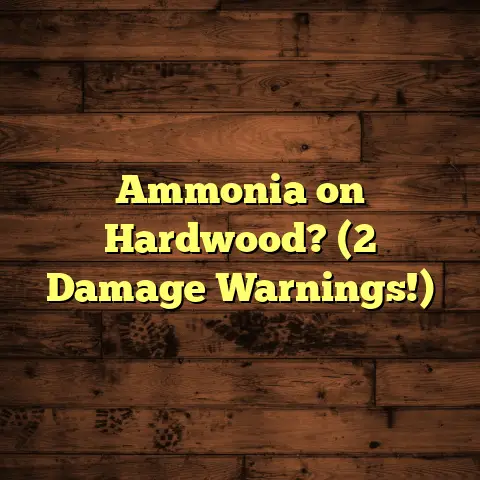Can You Pour Concrete Over Existing Concrete Floor?
The opportunity to transform an existing concrete floor into something new and fresh is both exciting and rewarding. I’ve had my share of experiences in this area, and I want to delve deeper into the process of pouring concrete over existing concrete floors. This guide will take you through my journey, filled with insights, tips, and lessons learned from various projects.
Assessing the Current Condition
Before I even think about pouring new concrete, I start by thoroughly assessing the condition of the existing surface. This step cannot be overstated. On one occasion, I was called to a residential property where the garage floor had seen better days—cracks were everywhere, and the surface was uneven.
What to Look For:
- Cracks: Are they small and superficial, or are they large and indicative of structural issues? Small hairline cracks might not pose a significant problem, but larger cracks may need repair before proceeding.
- Surface Levelness: Is the floor level? If it’s uneven, it might require additional work to correct. I remember a project where I didn’t address leveling properly, which resulted in a bumpy finish after pouring new concrete.
- Moisture Issues: Check for any signs of moisture seeping up from underneath the concrete. A simple plastic sheet test can help here; tape down a sheet of plastic and check for condensation after 24 hours.
Preparing the Surface
Once I’ve assessed the condition of the existing concrete, the next step is preparation. This step is crucial because proper surface preparation directly impacts the adhesion and overall success of the new layer.
Steps for Preparation:
- Cleaning: I always start by cleaning the existing concrete thoroughly. A pressure washer works wonders for removing dirt, oil, and any debris that could interfere with the bonding process. In one instance, I skipped this step and ended up with a layer that peeled away after just a few months.
- Repairing Cracks: For larger cracks, I use a concrete patching compound to fill them in. It’s essential to allow this to cure completely before proceeding with the new pour. I once had a client who insisted on pouring immediately after patching, which led to visible cracks reappearing in the new layer.
- Etching: Sometimes, etching the surface with a muriatic acid solution can enhance bonding by creating a rough texture. This step isn’t always necessary but can be beneficial if the surface is particularly smooth.
- Drying: After cleaning and repairing, ensure the surface is completely dry before applying any bonding agents.
Ensuring Proper Bonding
The next step involves ensuring a solid bond between the old and new concrete layers. This is where I see many contractors overlook an essential part of the process.
- Bonding Agents: I typically use a quality bonding agent that acts like glue between the layers. Applying it with a brush or roller ensures an even coat. On one project, I used too thin a layer of bonding agent, which resulted in some areas not adhering properly and eventually peeling away.
Pouring Concrete
Now comes the moment of truth: pouring the concrete. This part can be incredibly satisfying as you see your hard work come together.
Choosing the Right Mix:
I usually prefer using a specialized overlay mix designed for this purpose. It tends to be finer and smoother than standard mixes, which helps achieve that desirable finish.
Thickness Considerations:
For most residential applications, I aim for a thickness of about 1 to 2 inches. If it’s an outdoor space that will experience heavy wear, I lean toward 2 inches for added durability.
The Pouring Process:
When pouring, it’s essential to work in manageable sections. I often use a screed board to level out the surface as I go along. This requires some physical effort but ensures an even finish.
One memorable project involved pouring a patio slab for a client who wanted it ready for summer barbecues. We worked efficiently, but I learned that it’s crucial to keep an eye on how quickly the concrete sets—especially on hot days.
Finishing Touches
After pouring, I focus on finishing touches that can make all the difference in appearance and functionality.
- Smoothing: Using a trowel allows me to smooth out the surface and create an even finish. If my client wants a slip-resistant surface for an outdoor area, I might use a broom or other texturing tools to create grooves.
- Curing: Curing is one of those steps that can easily be overlooked but is vital for long-lasting results. I cover the new concrete with plastic sheeting or apply curing compounds to retain moisture during the initial setting period. On one occasion, I neglected this step and ended up with surface cracking due to rapid moisture loss.
Cost Considerations
Cost becomes a significant factor when planning any flooring project. In my experience, using tools like FloorTally has been invaluable for generating accurate estimates based on local material and labor costs.
Estimating Costs with FloorTally:
During one particular project where we resurfaced a large commercial floor, I used FloorTally to calculate expenses related to materials, bonding agents, and labor hours. The platform allowed me to present my client with transparent pricing right from the start—a practice that has helped build trust over time.
For instance:
- Materials: The cost of concrete mix can range from $100 to $150 per cubic yard depending on the quality and type needed.
- Labor: Depending on location and complexity of the job, labor costs might add another $2 to $5 per square foot.
With FloorTally’s estimates, I was able to provide my client with a realistic budget that encompassed all necessary expenses without hidden surprises.
Challenges Encountered
Every project has its challenges, and pouring concrete over existing surfaces is no different.
- Temperature Fluctuations: I’ve learned that weather can significantly impact how concrete sets. On one project during late summer, temperatures dropped unexpectedly overnight after pouring. The result? Cracking in some areas due to rapid setting.
- Moisture Trapped Below: If there’s moisture trapped beneath the existing floor, it can lead to problems like bubbling or lifting in the new layer. I’ve experienced this firsthand; after pouring over a damp surface, we saw issues arise within weeks.
- Uneven Surface: If you don’t take care to level out existing imperfections adequately before pouring, you could end up with an uneven finish that requires additional work later on—something I’ve had to address in several past jobs.
Comparing Options
Over time, I’ve explored various options when considering resurfacing concrete:
- Self-Leveling Compound: This product is fantastic for indoor applications where you need a perfectly flat surface. It flows well and can fill in low spots effectively.
- Concrete Overlay: Thicker than self-leveling compounds, overlays are suitable for outdoor spaces and provide durability against wear and tear.
- Stamped Concrete: For clients looking for aesthetics alongside functionality, stamped concrete offers decorative patterns while maintaining strength.
In my experience, choosing between these options largely depends on intended use and desired appearance. For instance, while stamped concrete works beautifully for patios due to its decorative nature, self-leveling compounds are better suited for indoor applications needing precision.
Maintenance Tips
Once your project is complete, maintenance plays a key role in ensuring longevity:
- Regular Cleaning: I recommend using mild detergents for cleaning your new surface rather than harsh chemicals that could damage it over time.
- Sealing: Sealing your new concrete every few years can protect it from moisture and stains—especially crucial in areas prone to extreme weather conditions.
- Avoid Heavy Loads Initially: After pouring new concrete, be mindful of how soon you place heavy items on it; allowing adequate curing time is critical.
Real-Life Case Studies
To provide further insights into this process, let me share some real-life examples from my projects:
Case Study 1: The Garage Resurfacing
A client approached me about resurfacing their garage floor that had numerous cracks and stains from years of wear. After assessing the condition, we decided on pouring a new layer over it rather than tearing it out entirely.
We cleaned the surface thoroughly and filled in larger cracks before applying a bonding agent. The project took about two days—one for preparation and pouring and another for finishing touches like curing.
The result? A smooth gray floor that not only looked fantastic but also was far more durable than before.
Case Study 2: The Outdoor Patio
Another memorable project involved resurfacing an outdoor patio where my clients wanted both aesthetics and functionality. We opted for stamped concrete to achieve a stone-like appearance while ensuring durability against weather elements.
After assessing and preparing the surface by cleaning and leveling out imperfections, we poured our stamped overlay mix with care. We finished with sealing to protect against moisture penetration.
The final product was stunning—perfect for summer gatherings!
Conclusion
Pouring concrete over an existing floor presents an excellent opportunity to refresh your space without the hassle of removal. Through my journey—filled with successes and challenges—I’ve found that careful planning, attention to detail in preparation, proper execution during pouring, and diligent maintenance afterward are all essential components for achieving great results.
So whether you’re considering resurfacing your garage floor or enhancing your outdoor patio, take your time throughout each step of the process. With patience and attention to detail, you can achieve beautiful results that enhance your space for years to come!





